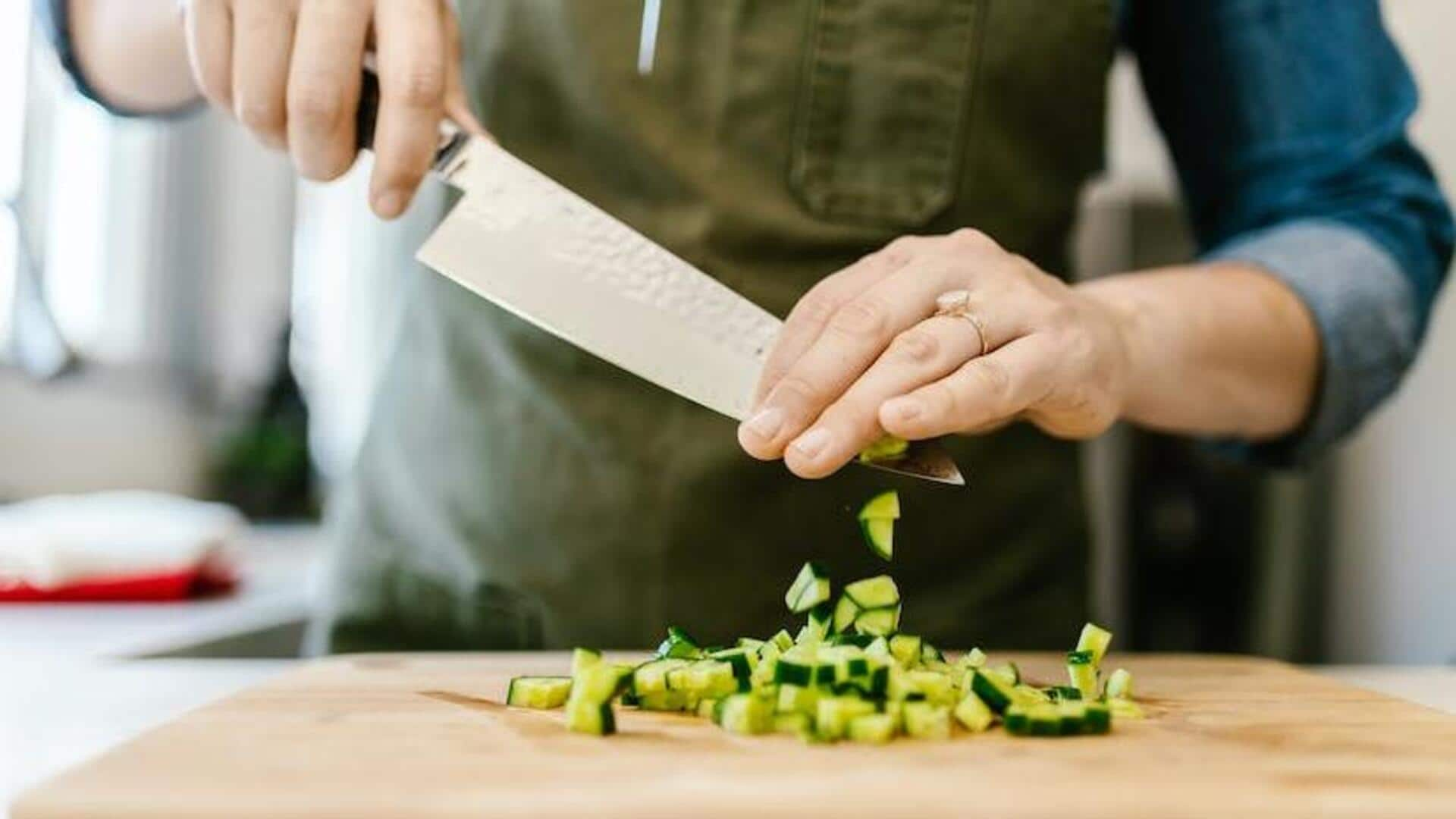
Learn the difference between chopping, grating, slicing, dicing, and mincing
What's the story
Although chopping, grating, slicing, dicing, and mincing are all related to culinary arts, they differ from each other when it comes to their meaning and usage. So calling all aspiring chefs and kitchen enthusiasts! Let us help you understand each of these terms and where to use them correctly so that you can amp up your culinary basics.
Tiny bits
Chopping
Chopping is an activity of cutting down something into very tiny bits. It's usually applied to fruits, vegetables, and meat. In this process, the material is placed inside a slowly-rotating bowl that has sharp blades. Usually, these bowls have strings attached, which when pulled, chop the product into pieces. People also use a knife to cut the concerned vegetable or fruit into small pieces.
Small shreds
Grating
Grating is defined as the process of reducing food into very small fragments or shreds. Foods like cheese are rubbed against a grater to produce tiny particles, threads, or even a powder. Some common foods that are grated include cheese, carrot, zucchini, garlic, ginger, etc. Additionally, the food you grate is, more often used as an item for topping, stuffing, or garnishing a dish.
Regular parts
Slicing
Slicing is a very common technique and it means cutting something into thin, flat, or regular parts. It is used to cut large vegetables, fruits, meats, or even herbs in some cases. You can either use a knife or a piece of slicing equipment that features rotating blades and cuts down the food as it passes through it.
Small blocks or dice
Dicing
Dicing is an extension of slicing and it happens to be a culinary knife cut in which the food item is cut into small blocks or dice. It is usually done for ornamenting food or to get evenly cut pieces for easy cooking. It is believed that dicing food actually helps you cook it faster and allows equal distribution of flavor and texture.
Uniform pieces
Mincing
Mincing is an activity in which the food is divided into uniform pieces. These pieces are smaller than when they are diced or chopped. You can use a knife or a food processor to mince a food item. In some cases, a grinder works well. too Garlic, ginger, and herbs are commonly minced to make sure their flavor spreads evenly in a dish.